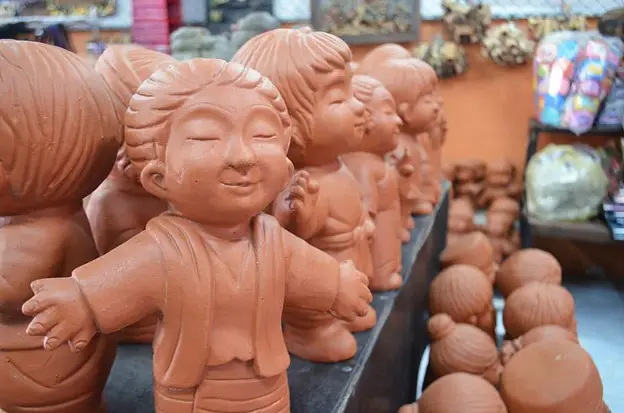Firing your pottery ware is imperative to create decorative items or kitchen wares that are durable and last for years. The more you understand the science behind kiln firing, the better control you have over the final output. While firing is a concept true only for kilns, you can also create pottery ware in your home oven that is equally durable. But, for that, you need to know the science behind firing pottery in a home oven. So, let us dig deeper into what happens to your pottery ware when placed inside a home oven!
Can You Fire Earthenware, Stoneware, Or Porcelain In A Home Oven?
The straight answer to this is a big no. You cannot fire earthenware, porcelain, or stoneware clay in a home oven. Ceramics need to be fired at a very high temperature to make them durable and incorporate permanent physical changes to their chemistry. This simply isn’t achievable in a home oven. A typical home oven can only reach an average of 500oF to 800oF, which isn’t enough to fire the clay to maturity.
However, you can surely dry them off completely in a home oven before it is fired in a kiln.
What Happens To Clay Inside A Home Oven?
Clay undergoes several stages of physical changes once you start firing them in a home oven. But, before you pop the clay into the home oven, make sure you let it dry outside for a minimum of 24 to 48 hours, depending on the size of the potteryware. If you don’t do this, the steam that escapes from the clay’s surface and interior will cause the artwork to explode.
While it is drying outside, you can pre-heat the oven to a desired temperature, as stated in the packaging of your clay. The initial drying temperature should be very slow. This allows the water locked between the particles in the clay ware to evaporate. An ideal temperature when this starts to happen is 170oF to 212oF, and this phase is termed water smoking. Again, this allows the water locked between the clay crystal pores to evaporate.
In the next stage, the water combined chemically with your clayware evaporates. Keep in mind that the chemical formula for clay is Al2O3.2SiO2.2H2O. So, it is these two water molecules in each particle of clay that need to be removed chemically with the help of high heat. This process is termed dehydroxylation, and this happens at 1022oF. Once this particular chemical change happens to your clay piece, it cannot be returned or reversed to its original malleable state.
However, this temperature isn’t achievable with oven firing. So, a chemical change like this cannot happen in a home oven.
As a result, the only change that happens to your clayware in a home oven is the evaporation of water from the clay particles. Unfortunately, this doesn’t impart permanency to the piece. Hence, stoneware, earthenware, or porcelain fired in a home oven isn’t as strong or durable as kiln-fired pieces. You will essentially end up with a bone-dry clay piece.
What Clay Variant Can You Fire In Your Home Oven?
If you are looking for the best clay variant that can be fired in a home oven, it is polymer clay. It is the only clay variant that undergoes chemical changes in an oven to harden and achieve strength and permanency ultimately.
Although during the initial curing process, the clay would soften a bit inside the oven, it would eventually harden as it cools down. The molecules in this clay variant fuse into a durable and solid mass which is called a cured polymer piece. If you wish to experiment with polymer clay, you can try the Arteza Polymer Oven Bake Clay Kit. Available in 42 bright and beautiful colors, these clay pieces retain their color vibrancy even after being baked or cured in a home oven.
Alternatively, you can also fire air-dry clay in a home oven. However, it isn’t essential as air-dry clay hardens when exposed to air for 24 hours or longer, depending on the size and thickness of the artwork. However, drying air-dry clay in a home oven can help fast-track the hardening process.
Conclusion
A home oven is a great tool in your process of mastering pottery making from the comfort of your house. However, it can only be used for smaller projects that don’t require firing. If you plan on using traditional clay variants, it is important to have a tabletop kiln to aid the firing process help achieve permanency, and add strength to your pottery ware.







